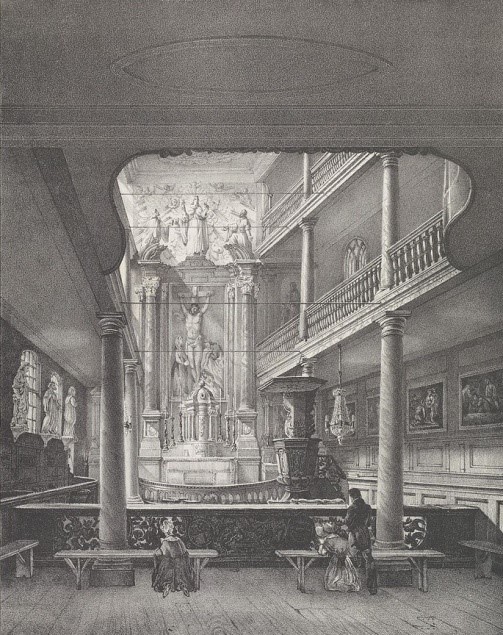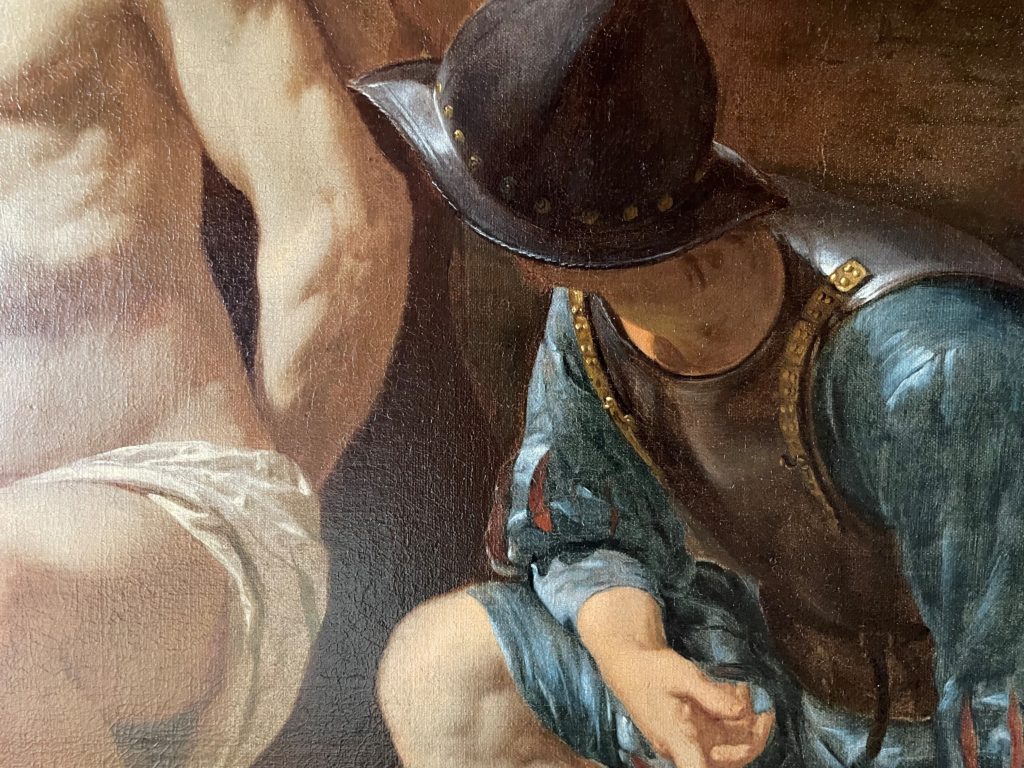In the past, the passion series by Adriaen van de Velde (1636-1672) was judged negatively several times. According to critics, the paintings add nothing to the painter’s oeuvre and they are even a break in style with his other work. It is also astonishing that the figures are worked out with so little quality and stylistic consistency. The painter’s strength does not seem to lie in this monumental Biblical genre, in which all the attention is focused on the prominent figures. The series has been described as a seventeenth-century ‘Catholic rush job’.
Would Adriaen van de Velde, a successful and well-known landscape painter, have rushed his commission for house church Het Hart and produced paintings of a lesser quality? Should we look for the answer to this question in his personal life? For example, because as a Protestant he does not feel involved in the Catholic house church. Is he perhaps being paid too little from client Sybilla Fonteijn? Was he sick? After all, Amsterdam was hit by the plague in 1664. Did he let his students cooperate? Former curator Robert Schillemans has researched the painter and his religious work for years and concludes that these arguments do not make sense.
[Het verhaal gaat verder onder de afbeelding.]

Adriaen grew up in a Protestant family. On November 30, 1636, he was baptized in Amsterdam in the Reformed Oude Kerk. His father and brother make maritime paintings, but he specializes in landscapes with cattle and also paints passion pieces for Catholic house churches. In 1657 he married the Catholic Maria Pieters Ouderkerck (ca. 1638-1684). There is no question of a mixed marriage. Everything indicates that Adriaen converted to Catholicism out of conviction. The marriage does not take place in the Reformed Church, but is proclaimed ‘in front of the front’ and concluded by aldermen. All seven children of Adriaen and Maria are baptized Catholic. Three daughters, Eva, Sara and Aleida, are baptized in Het Hart house church, where the Augustinian priest Petrus Parmentier celebrates mass. Maria Sybilla Fonteijn is one of the 20 spiritual virgins who assist Parmentier in the daily ins and outs of the house church. It seems plausible that the commission to paint the passion series is a serious matter for Adriaen, in which he invests time and effort. After all, he has become a Catholic, goes to church in Het Hart and knows the client and the priest who receives the paintings as a gift.
The suspicion that the reward for painting five paintings of the size 92 x 140 cm would not have been sufficient does not appear to be well founded. Adriaen receives 50 guilders for each painting. Added together, that is more than the annual wage of a craftsman at that time. The price is also not out of step with the amounts that painters of the same level receive. Sybilla Fonteijn, the client, comes from a wealthy and prominent family. Her great-grandfather Joost Buyck (1505-1588) was the last Catholic mayor of Amsterdam. She has considerable wealth and lives at the Beguinage, where she has her own maidservant. If the amount of 50 guilders per painting would not have been sufficient, it is quite conceivable that Sybilla would have increased the price. It is also not inconceivable that it is a friendly prize to everyone’s satisfaction.
[Het verhaal gaat verder onder de afbeelding.]

The fact that Adriaen stands for the quality he delivers is also apparent from the fact that he has signed his paintings. He has even written his name in large on the right of The Flagellation . If students have already participated – because he is ill or because the series has to be finished before Easter – they will have done so to the satisfaction of the master. In 1664 Adriaen painted several small and larger paintings and a number of good quality drawings in addition to the passion series. There is nothing to indicate that the 28-year-old painter would have been affected by the plague that makes more than 20,000 victims among the often poor population of Amsterdam.
The mystery of why the passion series is so different from Adriaen’s other work has not yet been solved. It cannot be due to the circumstances in his personal life. Research into the clients and the content of the assignment can provide new insights. Who determined the theme of the paintings? What exactly is being depicted? Were there examples or did the painter have to develop a new visual language?
In the autumn this story will be continued in blog 2 The secrets of the suffering of Christ. For more information about the restoration process, see the digital bulletin ‘t Haantje 55 edition August.
Sources
Boers, Th., ‘The missionary Petrus Parmentier (1601-1681) and his spiritual daughters’, in: Yearbook of the Amstelodamum Society 103 (2011) pp. 70-97.
Boers, Th., ‘The tireless Petrus Parmentier’, in: Ons’ Lieve Heer op Solder ,Our Lord in the Attic Museum, Amsterdam 2015, pp. 53-71.
Eck, X. van, ‘Petrus Parmentier’s posthumous portrait and the altarpieces for ‘Het Hert’ and ‘De Ster’, in: Bulletin, Stichting Vrienden van Museum Amstelkring / Ons’ Lieve Heer op Solder 20 (November 2001) pp.10- 12.
Kruk, B. van der, ‘Restoration Adriaen van de Velde. surrounded by riddles,[interview met Robert Schillemans] , in: ‘t Haantje 54 (summer 2020) pp.7-10.
Schillemans, R., ‘Christ in the Garden of Gethsemane’ by Adriaen van de Velde’, in: Bulletin, Friends of Museum Amstelkring Foundation / Ons’ Lieve Heer op Solder 19 (November 2000) pp.13-17
Schillemans, R., ‘Back to Solder. Adriaen van de Velde’s five passion scenes’, in: ‘t Haantje 29 (spring 2007) pp.4-11.
Schillemans, R., ‘Adriaen van de Velde and his passion series for ‘the Heart’ (1664)’, unpublished research report (2019), Archives Our Lord in the Attic Museum.
Soestbergen, A. van, ‘Good Friday in the St. Augustine Parish in Amsterdam North’, in: ‘t Haantje 29 (Spring 2007) pp.12-13.

